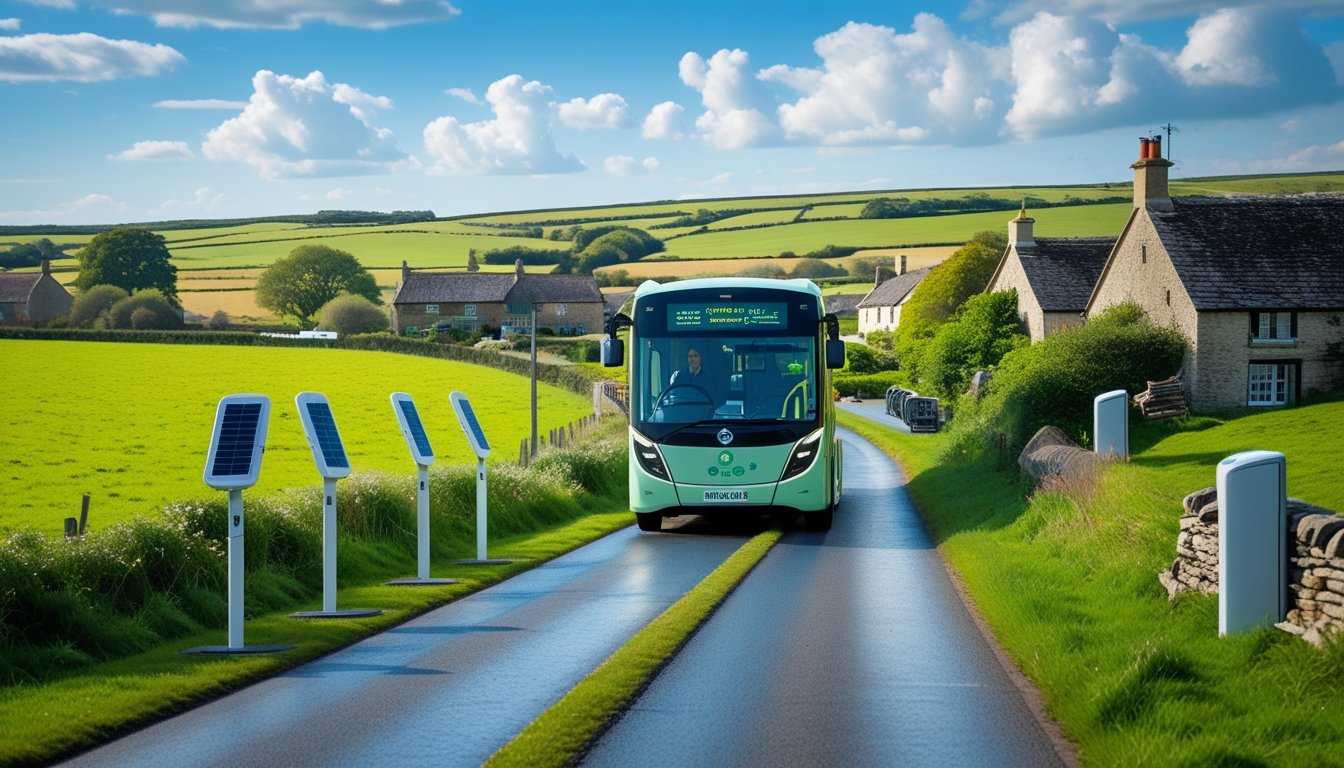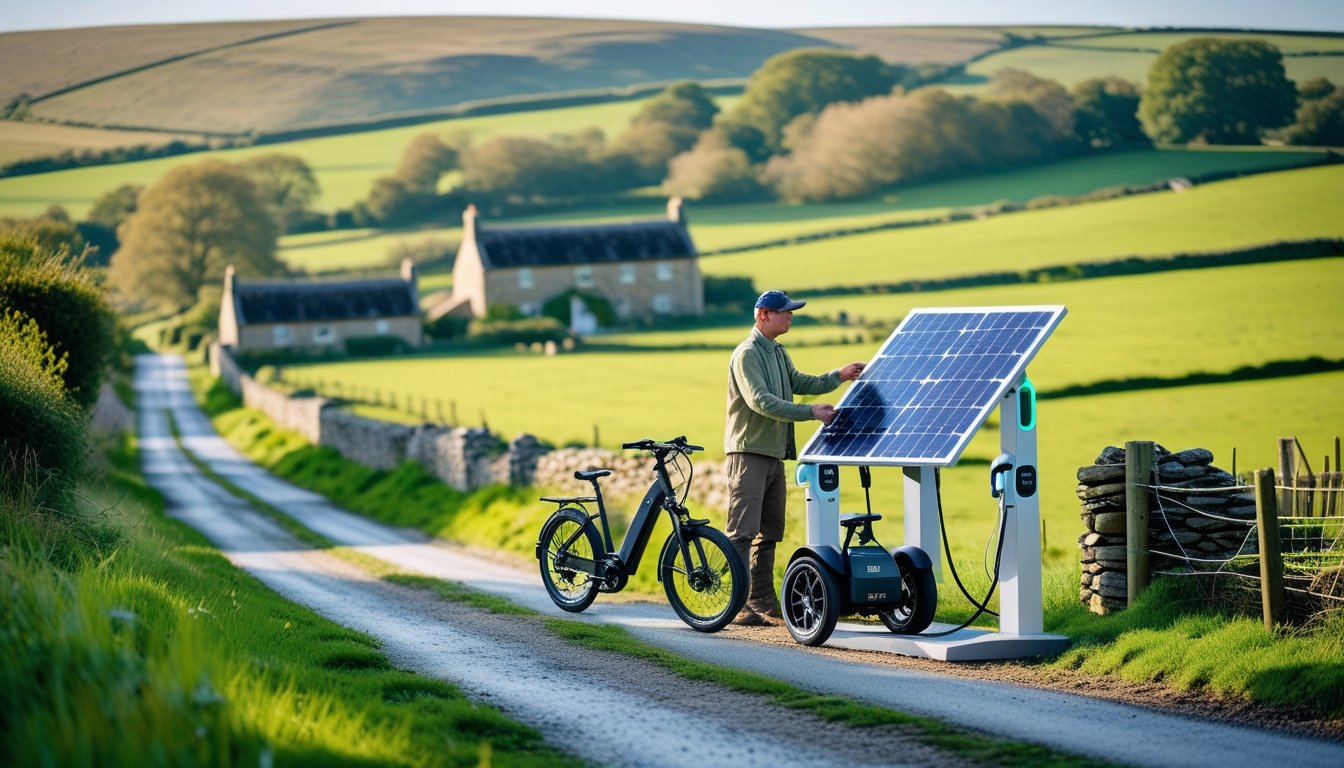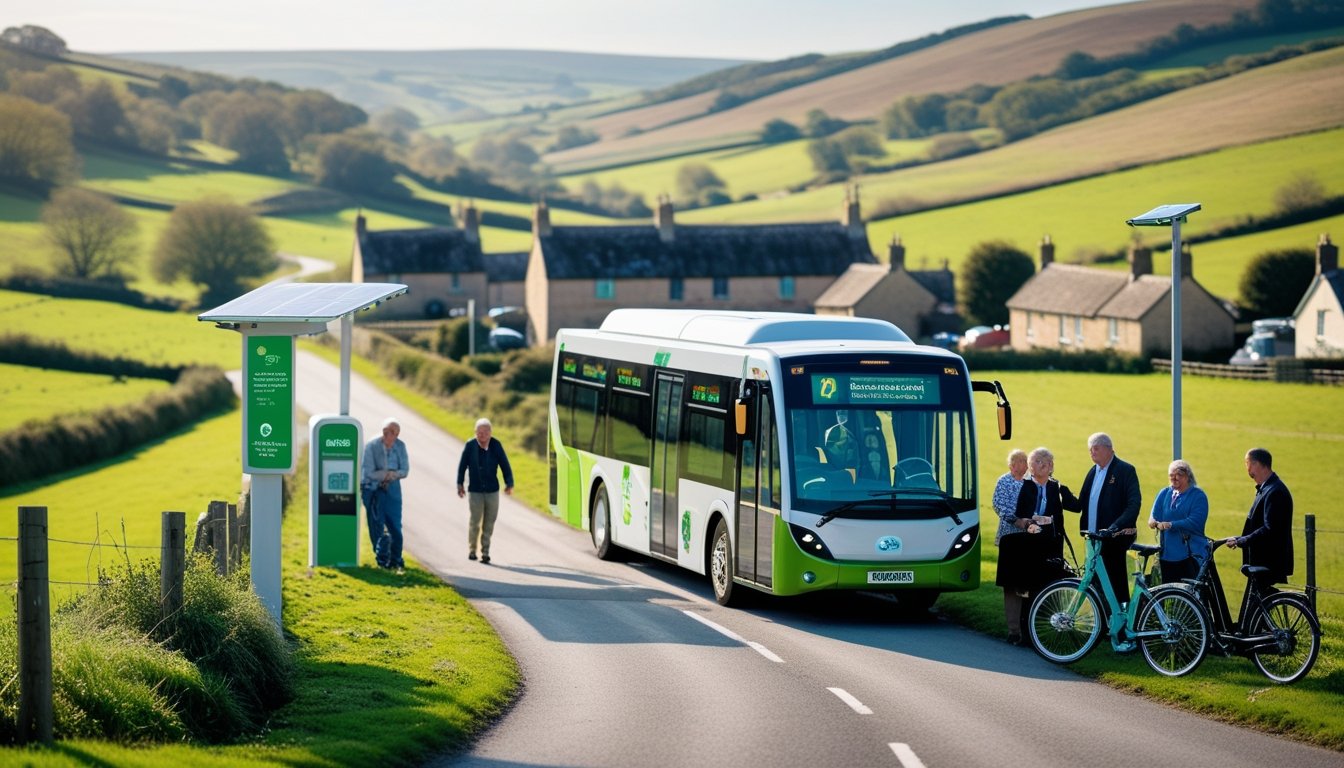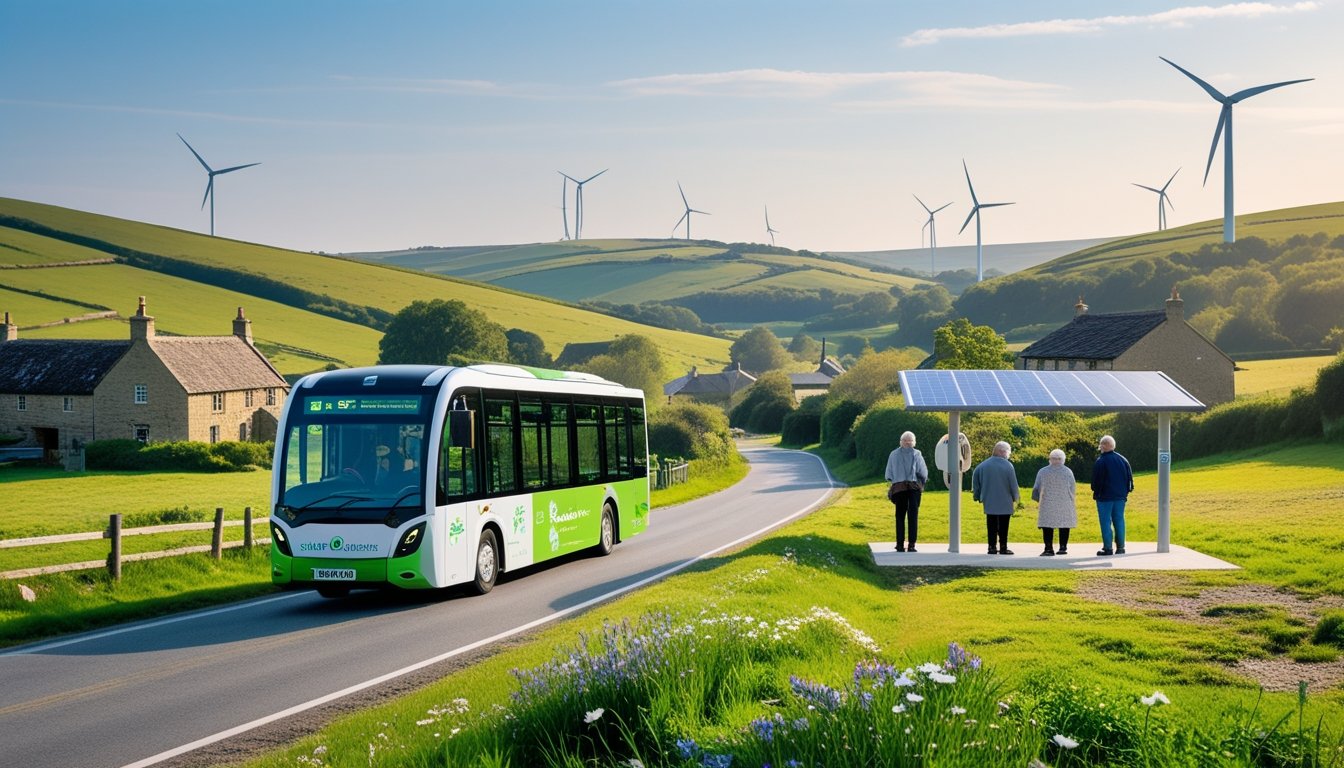Late updated: 28 Nov 2025 11:11
Written by: Oliver Bennett
Innovative Green Transportation For Rural UK Areas: Sustainable Solutions Explained
Embracing innovative green transportation solutions for rural areas in the UK is not just a visionary idea—it's a necessary transformation for sustainable living. With the government's investment in advanced transport projects, rural communities are witnessing a shift towards eco-friendly mobility solutions that address their unique needs. The integration of renewable technologies and supportive infrastructure is paving the way for enhanced connectivity and reduced carbon footprints.

This shift is driven by a collaborative effort between local authorities, businesses, and communities, all working towards a common goal of sustainable rural mobility. Projects funded by initiatives such as the Rural Transport Accelerator Fund are fostering creative solutions to connect the less accessible areas, making it easier for people to transition to greener options. Engaging with the latest innovations ensures that we are not leaving rural areas behind in the push for environmental progress.
Residents in rural UK areas can anticipate a future where they're no longer solely reliant on private cars. Offering safer, more reliable transportation options is only the beginning. As we delve into this topic, we will explore how these transformations are reshaping rural living and what it means for the future.
Key Takeaways
- Green transport solutions are transforming rural UK mobility.
- Collaborative projects drive sustainable rural transport innovations.
- Residents can expect improved connectivity and eco-friendly options.
Key Innovations in Green Transportation for Rural UK Areas

Innovative solutions in rural UK areas are transforming transport through modernised public services, digital tools, and advanced green mobility. These innovations focus on accommodating the unique needs of rural communities while prioritising environmental sustainability and accessibility.
Modernising Rural Public Transport Services
Rural areas often face challenges with public transport due to low population density and limited infrastructure. In response, modernisation efforts are underway. Electric buses are being deployed to provide eco-friendly mass transit options. These buses emit fewer pollutants, contributing to cleaner air in rural environments. Integrating these services with existing transportation networks enhances connectivity and service frequency.
Additionally, enhanced scheduling and real-time tracking systems inform passengers about bus arrivals and help streamline operations. Improved connectivity between travel hubs and rural locations is also significant, facilitating better access to essential services. By upgrading traditional transport methods and embracing greener technologies, we aim to meet the mobility needs of rural residents effectively.
Digital Tools and Demand-Responsive Solutions
Digital innovations play a vital role in tailoring transportation to the specific demands of rural users. One prominent initiative is the trialling of digital platforms that allow passengers to book trips efficiently. These platforms provide real-time information on service availability and optimise routes based on user demand, reducing wait times and increasing service reliability.
Demand-responsive transport services ensure that transportation is available when and where it is needed, reducing unnecessary trips and conserving resources. Programmes like the Rural Transport Accelerator implement these technologies to facilitate shared transport options, fostering community connections while maintaining environmental standards. This approach aligns with our goal to deliver flexible and sustainable transportation that caters specifically to rural lifestyles.
Advanced Green Mobility for Rural Communities
Incorporating advanced mobility solutions involves embracing the latest green technologies and integrating them within rural settings. Renewable energy sources, such as solar power and hydrogen, are powering various transport modes, decreasing dependency on fossil fuels. These innovations help in creating sustainable transport options that are not only environmentally friendly but also economically viable for rural communities.
The establishment of hydrogen hubs and infrastructure supporting electric vehicle (EV) usage is critical. We support projects that test new methods of reducing emissions and enhancing energy efficiency. Through investment in the latest green mobility technologies, we seek to unlock the potential for sustainable growth and connectivity in rural areas, offering residents efficient and responsible ways to travel.
Infrastructure and Partnerships Driving Sustainable Rural Mobility

Investing in sustainable rural mobility involves strategic infrastructure improvements and collaborative efforts among stakeholders. Our focus encompasses enhancing road safety, fostering innovation through key partnerships, and leveraging government support to realise our mobility goals.
Upgrading Rural Roads for Safe Green Travel
Improving rural road infrastructure is pivotal for the safe implementation of green travel solutions. Narrow and winding roads common in rural areas present unique challenges that require tailored approaches. Widening roads, adding dedicated bicycle lanes, and implementing traffic calming measures can enhance safety for all users, including cyclists and electric vehicle drivers.
Implementing smart technologies, like sensor-based monitoring systems, helps in maintaining these roads efficiently. By integrating renewable materials in road construction—like solar-powered lighting—rural regions can further align with green goals. Such enhancements are crucial not only for safer commutes but also for encouraging the use of sustainable transport options by reducing associated risks.
Collaboration with Connected Places Catapult
Collaborating with the Connected Places Catapult allows us to tap into pioneering transport technologies tailored for rural environments. They play a key role in researching and implementing innovative mobility solutions by harnessing data and digital connectivity. Their active involvement in the Rural Transport Accelerator programme brings cutting-edge technologies to rural areas, driving advancements in local mobility ecosystems.
Through pilot projects, these collaborations can showcase the potential of shared mobility services and other sustainable transport models in boosting accessibility. Such initiatives not only connect people to essential services but also promote economic activities by improving commute efficiency and reducing isolation. Empowering rural communities with data-driven decisions enables them to fully participate in the modern mobility landscape.
Role of Government and Funding Initiatives
Government and funding initiatives form the backbone of sustainable rural transport advancements. By allocating resources to develop infrastructure projects and subsidizing green vehicle purchases, the government can help reduce the financial barriers faced by rural communities.
Strategic funding for transport innovation pilots, administered through focused schemes and grants, is essential for fostering progress. Leveraging these funds in partnerships with local authorities, private firms, and research organisations can ensure that diverse and scalable solutions are tailored to meet rural needs. Access to ongoing support from the government also encourages continued community engagement and the active adoption of eco-friendly transport alternatives.
Frequently Asked Questions

In the rural UK, green transportation is essential for reducing carbon emissions and improving connectivity. Increasing focus is on implementing sustainable solutions, enhancing access to services, and utilising funding opportunities for development.
What sustainable transport solutions are currently being implemented in the UK's countryside?
Various innovative solutions are underway to improve transport in rural areas. These include on-demand bus services funded by the Rural Mobility Fund and efforts to integrate renewable technologies into existing infrastructure. These changes aim to reduce the reliance on private cars and improve accessibility.
How do green transportation initiatives affect rural communities' access to essential services?
Green transportation initiatives enhance access to vital services by providing more reliable and environmentally friendly travel options. Improved connectivity with public transport allows residents in remote areas to reach employment, healthcare, and educational facilities more easily. This can lead to stronger community bonds and improved quality of life.
What funding options are available for developing eco-friendly transportation in rural areas?
Several funding options exist for those interested in developing eco-friendly transportation. The UK Government offers grants and incentives, such as the Rural Transport Accelerator Fund, to support innovation in rural transport. These financial supports aim to accelerate the implementation of sustainable solutions across the countryside.
Which types of renewable energy are most effective for powering rural transport networks?
In rural areas, renewable energy sources like solar and wind power are becoming increasingly viable for transport applications. These technologies can power electric vehicles and support the infrastructure required for green transport networks. Selecting the appropriate energy source often depends on local geographical conditions and resource availability.
How does the transition to greener transport in rural regions align with the UK's climate targets?
Greener transport initiatives in rural regions are closely aligned with the UK's broader climate targets. Reducing transport-related emissions is critical for meeting national goals. By adopting sustainable transport solutions, rural areas contribute significantly towards achieving these environmental objectives.
What role do local authorities play in advancing green transportation infrastructures outside major cities?
Local authorities play a pivotal role in developing and implementing green transportation projects. They are responsible for planning, securing funding, and overseeing the deployment of sustainable transport solutions. Collaboration with government bodies and private sector partners is often necessary to navigate the complexities of these projects successfully.
